A week out the shop
6 Jun 2022
Tags: 3d printing, emfcamp
Deliveries and a festival meant I didn’t make it back into the workshop this week, but so as not to lose momentum on weeknotes, here’s a brief week out the shop.
Deliveries
Midweek I had hoped to get into the workshop for a little bit, but a parcel deliver required I be at home (my workshop is alas 40 minutes or so drive away). However, it was a good parcel to be at home for: it was my 3D prints from Shapeways!
First, up, we got my first ever mental print, the new headstock part for Älgen:
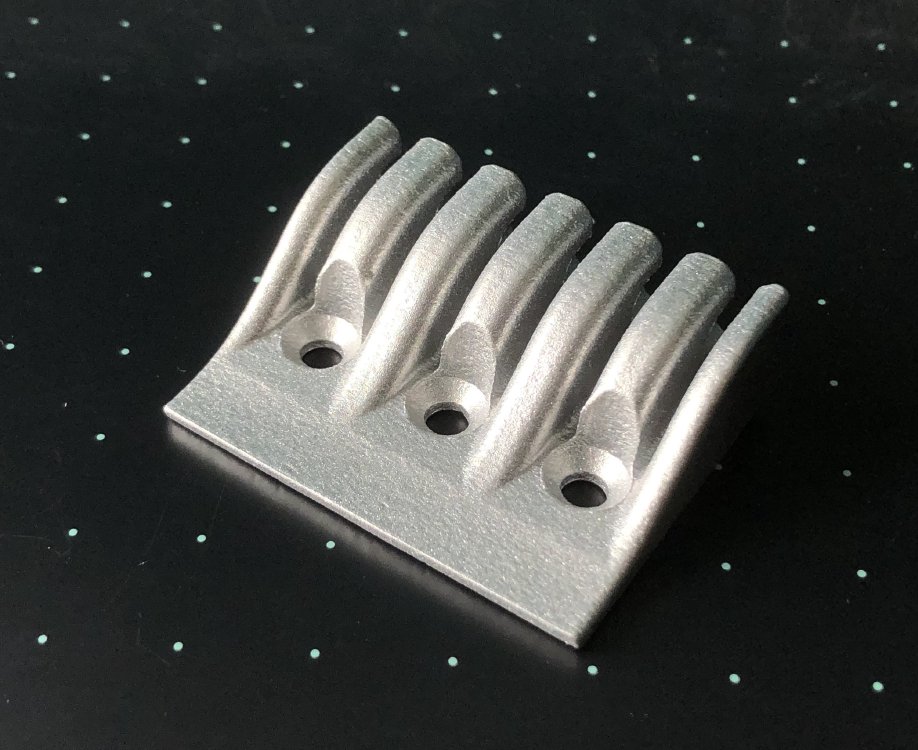
This is quite exciting to get, as it’s the other bespoke bit of hardware for this guitar outside the more obvious 3D printed body wings. However, in terms of Älgen being an instrument, it is slightly more important to get right as it’ll anchor the strings to the top end of the guitar, so will influence how it sounds much more, despite its comparatively diminutive size. It has to be correct both in terms of dimensions but also in terms of ability to handle load.
Certainly the part feels incredibly rigid, much more so than the plastic prototypes I’ve had printed. In theory it is over specified for the problem by a factor of five, so a good safety margin there, but that does assume I’ve correctly specified the loads etc. in Fusion.
One thing that surprised me is how light it feels, coming in at just 21.7 grams when I put it on my fancy coffee scales that are accurate to tenth of a gram:
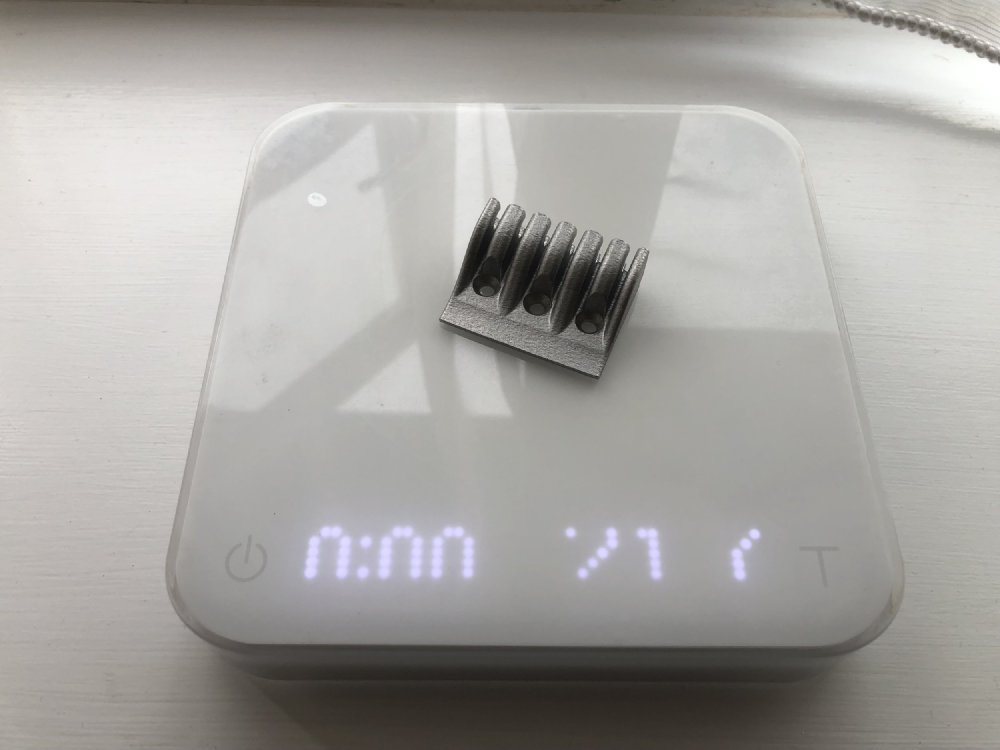
Apologies for the LED refresh caught in the phone’s camera, you’ll just need to take my word for it. I know I shouldn’t be surprised, but when I checked with Fusion, it says 21.788:
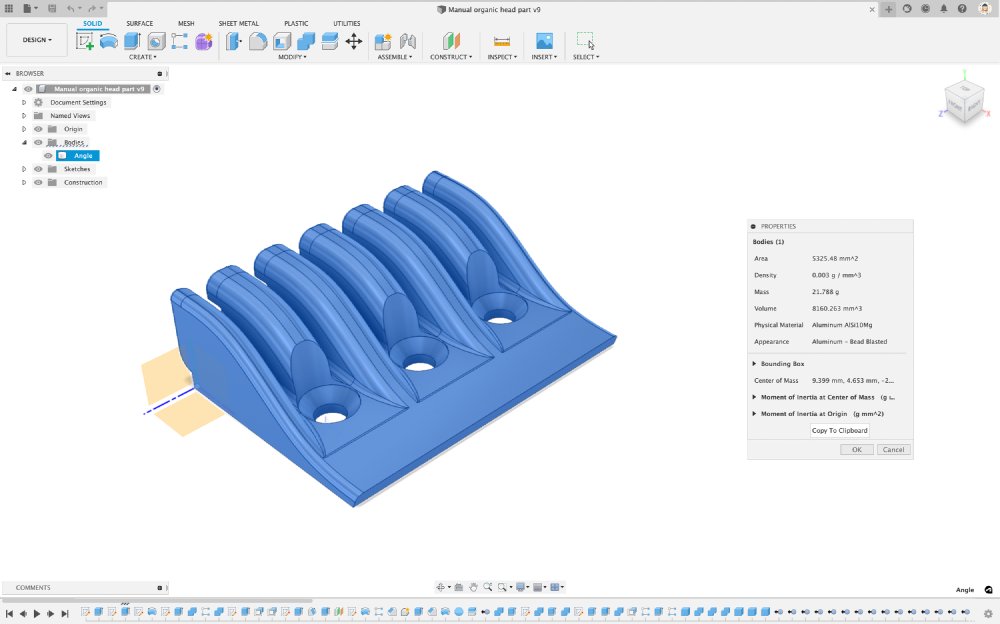
That’s pretty neat. I have to confess I never thought to check this before ordering the print, as physical material modelling is not a feature I used in Fusion normally, particularly given how I don’t fully model my guitars (e.g., I don’t model the neck carve) and wood pieces vary in density anyway, the numbers generated for guitar bodies and necks (the real costs) don’t really help me.
Still, given that the headless design of this guitar is to try and move the centre of gravity back to the core of the guitar, it’s nice that this piece is so light.
Next up is the custom bridge plate for C2:
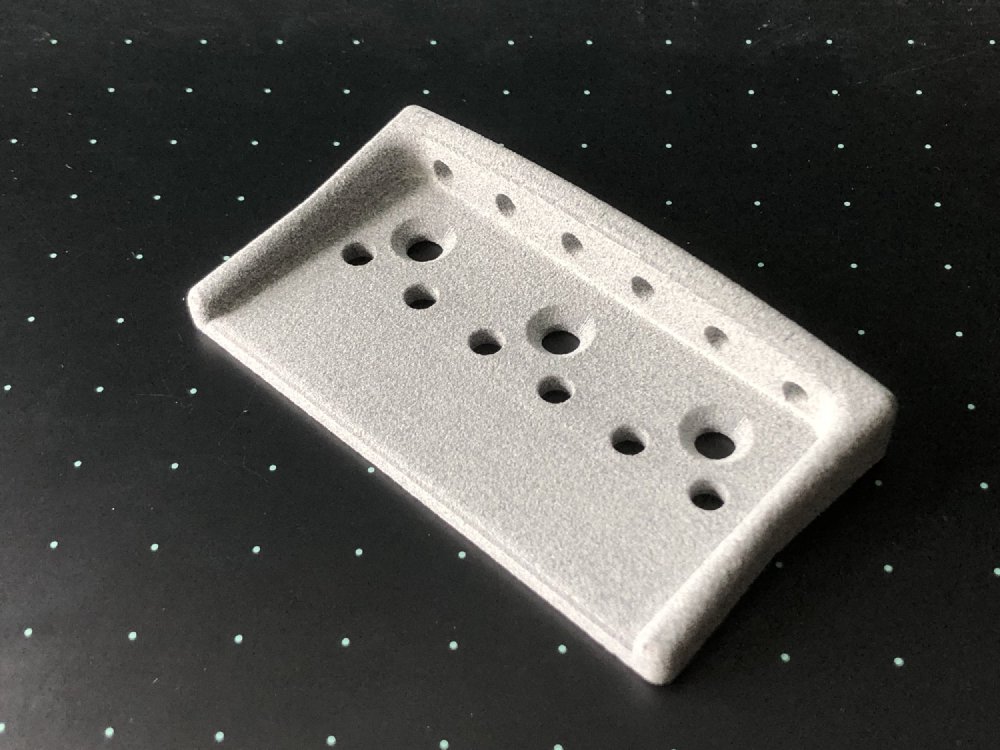
This is a plastic print for size checking, and alas the saddles are in the workshop, so I can’t test it for fit, but I’ll try do that as early as I can next week, because there might still be just enough time to get a metal print done before Makefest given how early these ones shipped.
The main thing I take from this is that the shape I made on the sides, with them being a bit concaved, is much more subtle in person, though as Jason pointed point that might be because the ridge lines of the print pull the eye from the shape slightly.
Still, overall it’s looking good.
Finally, I threw in a print of the old pickup selector switch design I used on a couple of earlier guitars:
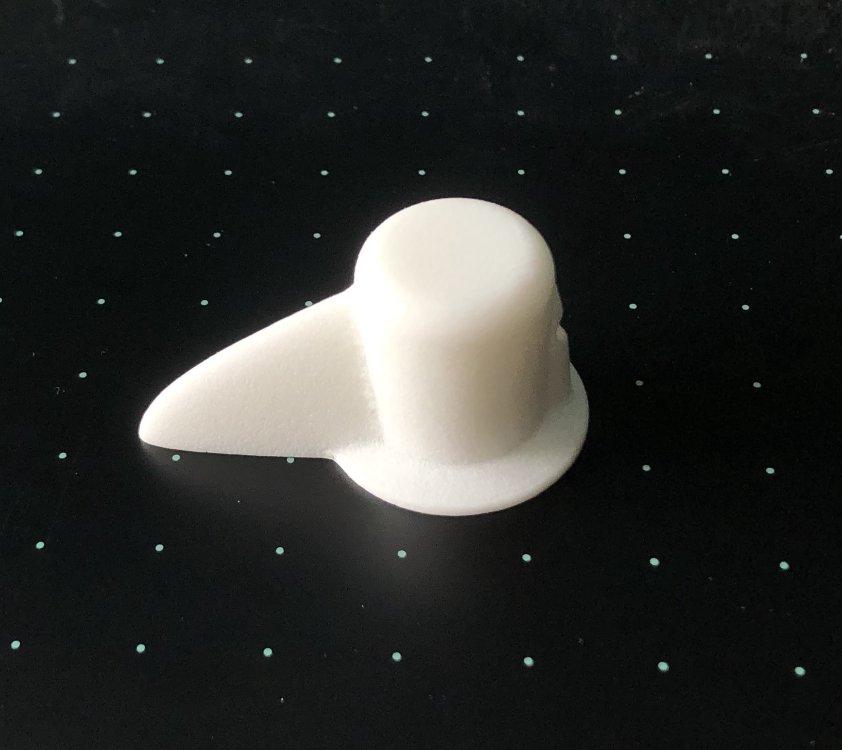
For both the current guitars I suspect I’ll return to 3D printing the control knobs. I’d stopped because the original ones I did with the FormOne resin printer at Makespace, which was both a lovely printer and a giant pain to work with at the same time, but regardless I no longer have access to it. I did try other 3D printers with special filament that is easy to smooth (in theory), but I still wasn’t happy with the results. But now that I’ve been happy with the results from Shapeways I thought I’d give it another go.
This print, which is in versatile plastic, aka Nylon 12-12, is not quite as good as I got off the FormOne on a good day and after a lot of fettling of the part - with those I had to sand them to remove support marks and just generally to increase the finish to a more pleasing point - but I’m still quite pleased with the results.
The main thing I’ll be checking with this when I get to the workshop is whether the material grips the potentiometer shafts well enough, and how easy it is to tap to for a grub screw into this port on the back (you can just see the indent half way up on the right of the picture).
Whilst I won’t use this design specifically for either guitar, it was just a quick way to check for material suitability, and if that works out I’ll design some new controls around this process.
EMFCamp 2022
The rest of my week was taken up with a return to EMFCamp, a three and a bit day festival of open technology, arts, and hacking. I’ve been there a few times before (and was fortunate enough to give a talk there in 2018), but this was the first time it’s been run in the aftertimes. I have to confess, I was a bit nervous to be there with so many people again:
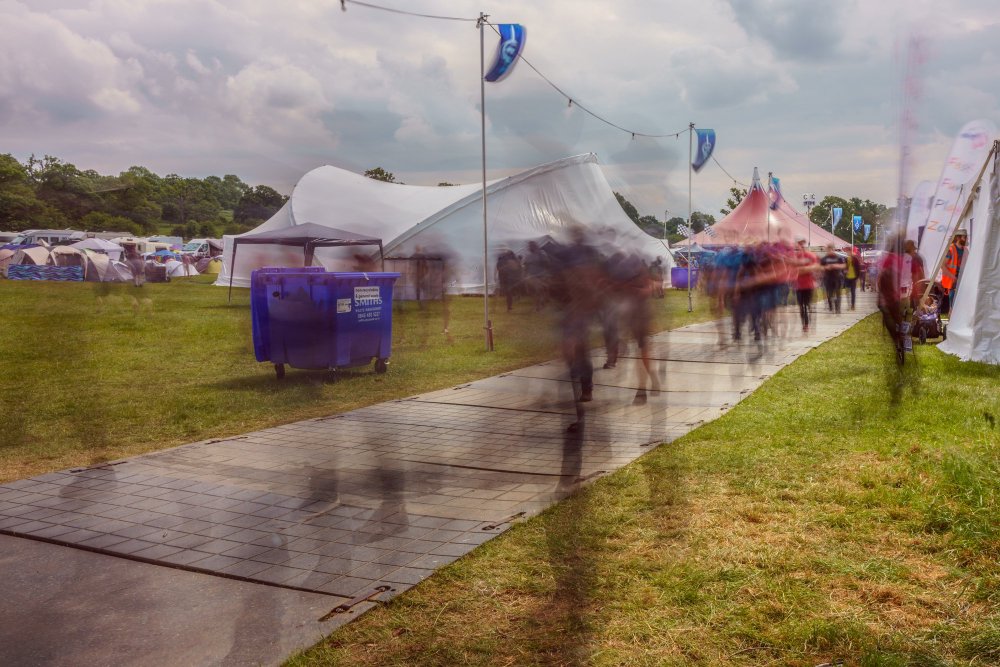
But, despite my initial reticence about the event, it was nice to meet familiar faces that I’d not seen in a long time.
There were quite a few interesting/unusual musical things at EMF this year too, and I thought might interest readers here. First up, there was the welcome return of World of Techno, which we met at last EMF, and is now part of how I know I’m in the right place:
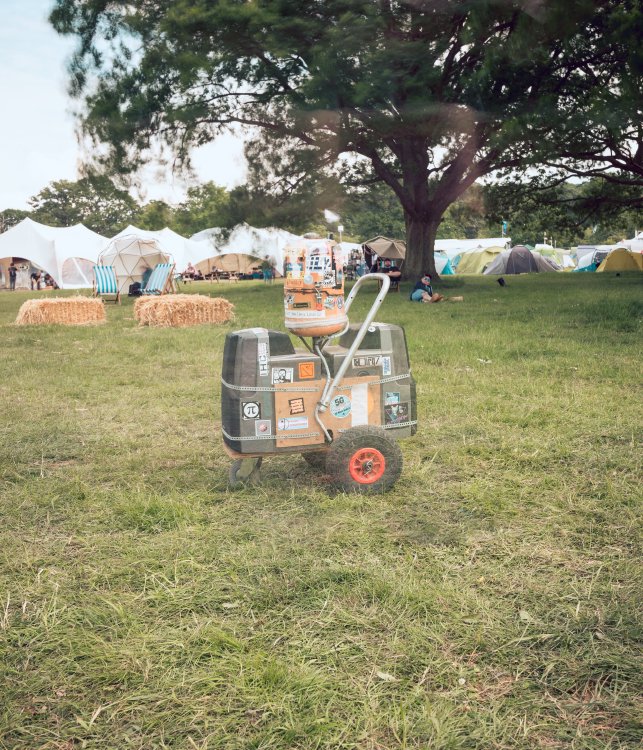
World of Techno is a robot of sorts, that moves by tempting people to take it around the campsite by the promise of new music (this to me makes it a robot :). WoT has a GPS module and the music it plays is keyed to its location, so as you drag it around it plays different things.
Next we had the instrument that made generative music based on a geiger counter connected to a xylophone by Nervous Squirrel:
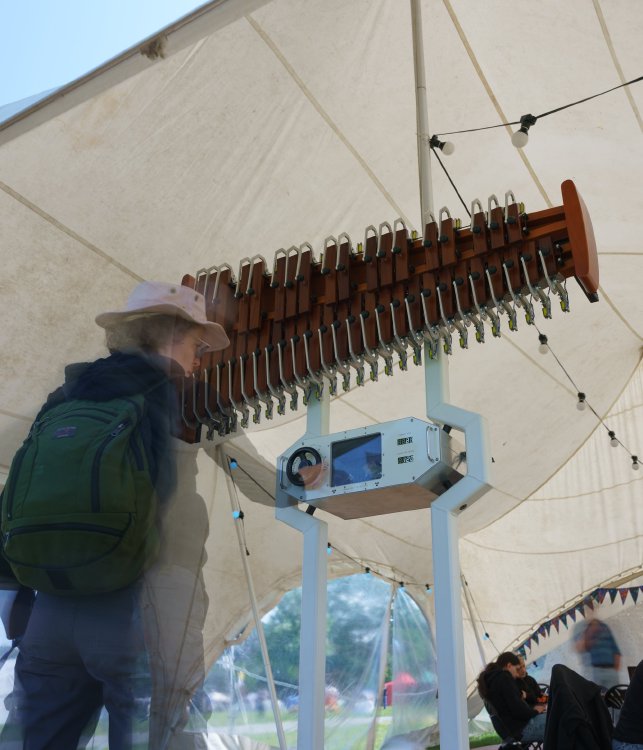
With this one, as you move the lead shield that sits between the chunk of uranium ore and the geiger counter, the random radiation particles that hit the sensor will trigger a microcontroller to play some notes, with both pitch and timing driven by what is a truly random source. Fun, and I just have faith that it was safe :)
More as a set piece next, we had the Mammoth Beat Organ, which is like Logic or GarageBand, but only if they were made out of cogs and powered by a pushbike.
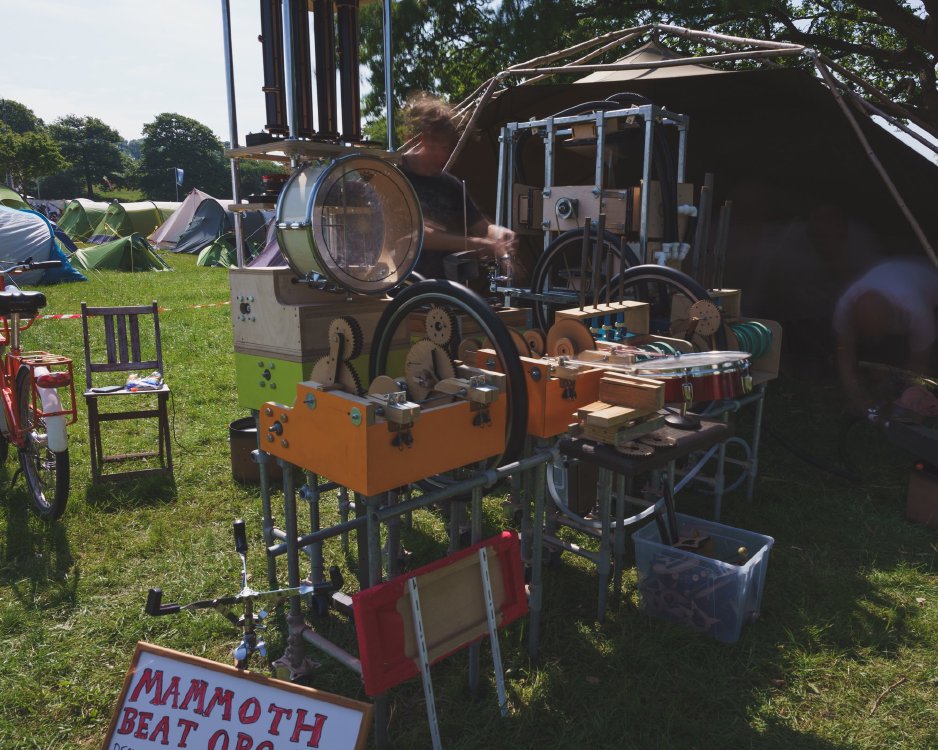
In you imagine how using a drum machine or a midi sequencer where you have a set of bars and you program when instruments fire, the cogs here are a physical version of that. As one of the pair would power the machine using the pushbike you see to the left, the other would be switching cogs and setting up cogs to drive new instruments as the performance progressed. Really fun to watch and lovely to see such a tangible interpretation of what to me has always been a digital experience.
Finally, there was Totem-Recall, which had a couple of interesting things on offer. Firstly, there was the whole robotic band thing that you can see in this picture:
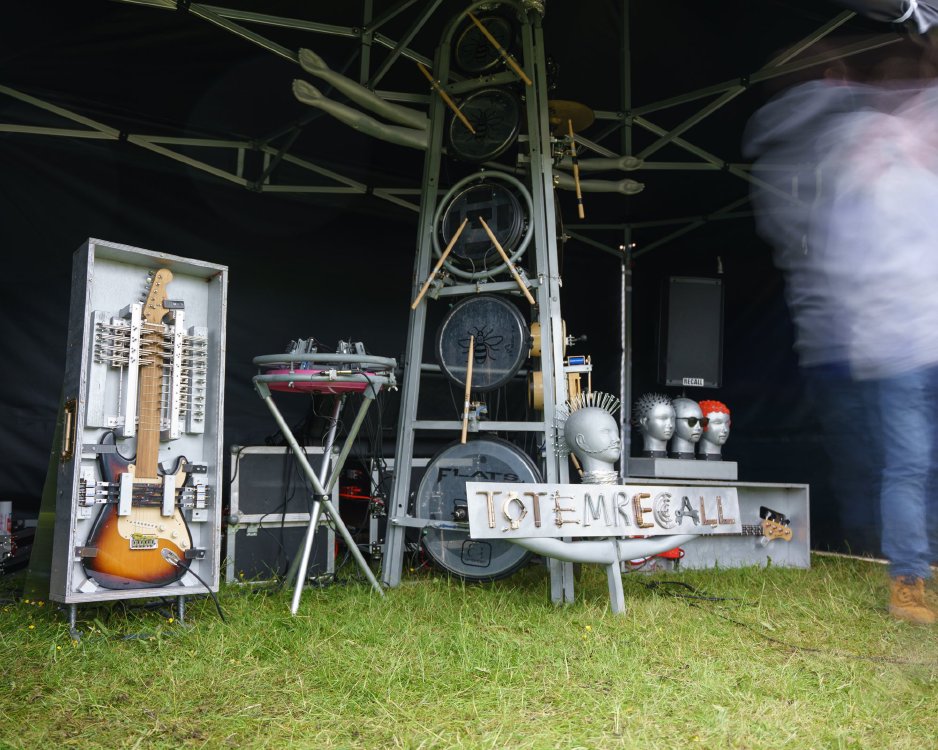
It’s nice that he’s got mostly analogue instruments driven by solenoids, compared to what could have been a much more digital synthesiser type of creation. The guitar I noted had a replacement fretboard on it, and when I asked the creator, Darren Hesford, about it, he explained that he basically needed a flatter fretboard to ensure that things were pressed down properly. On the bass guitar, which I assume came second, he solved the problem by drilling through the neck so that the solenoids were pulling the string down rather than pressing.
He also had a fun guitar, which you can see me playing here, that makes my Älgen guitar seem normal:
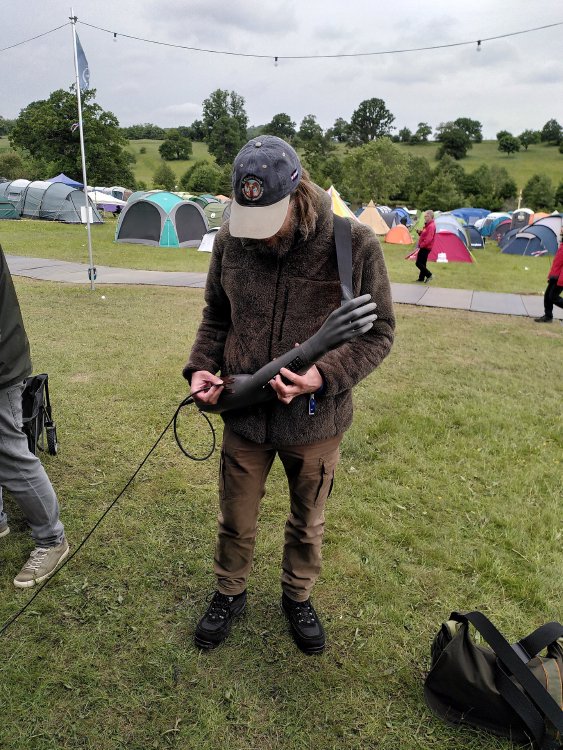
Called “the arm-strum” it’s more of a synthesiser I guess, and sounds a bit like an organ, but you play it a bit like a guitar. It has a set of switches where the fretboard would be that if you push it one way will play a major chord and if you push the other you get a minor chord, and then it has a set of copper blades where the strings would be that detects you strumming using a metal pick on a wire that (again, I assume) closes a circuit.
So that was the week that was - a fun week, but not much actual progress with Liverpool Makefest fast approaching - I suspect there will be a lot of weekends in the workshop this coming month!